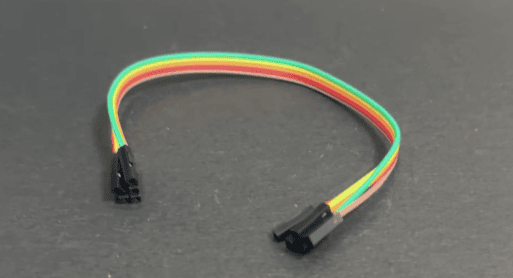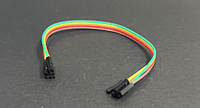


Female to Female Jumper Wires (Pack of 5 pcs)
Product Details
Connector Type: Female to female jumper wires have female connectors on both ends. These connectors are typically designed to fit onto standard male pins, such as those found on microcontrollers, sensors, and other electronic components.
Wire Length: Jumper wires come in various lengths, typically ranging from a few inches to several inches or more. The length you choose depends on your specific project and how far apart your components are on a breadboard or circuit.
Wire Gauge: Jumper wires also come in different wire gauges, with 22 AWG being a common size. The wire gauge refers to the thickness or diameter of the wire. Thicker wires can carry more current and are less prone to resistance, making them suitable for connecting power-hungry components.
Color Coding: Many sets of jumper wires come in different colors, making it easy to distinguish between different connections and components on your breadboard. Color-coding can help you keep your circuits organized and reduce errors.
Dupont Connector: Female to female jumper wires often use Dupont connectors, which are easy to insert and remove from breadboards and headers. These connectors provide a secure and stable connection while allowing for easy experimentation and modifications.
Flexibility: Jumper wires are typically made from flexible and stranded wire, allowing you to bend and position them as needed to connect components without introducing excessive strain on the connections.
Versatility: These wires are versatile and can be used to connect a wide range of electronic components, including microcontrollers, sensors, LEDs, motors, displays, and more. They are a fundamental tool in electronics prototyping and experimentation.


